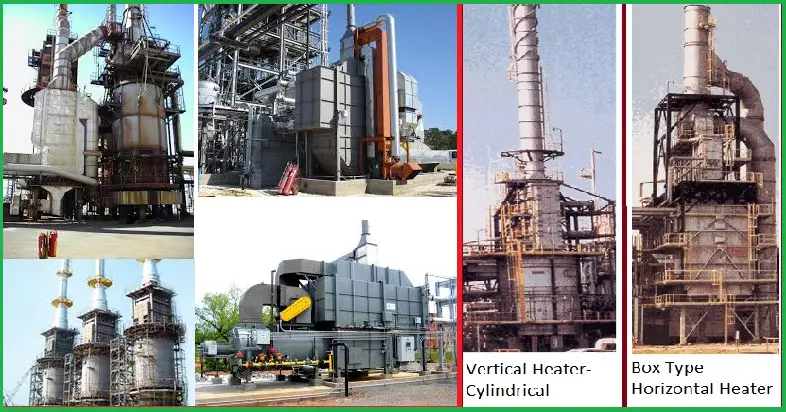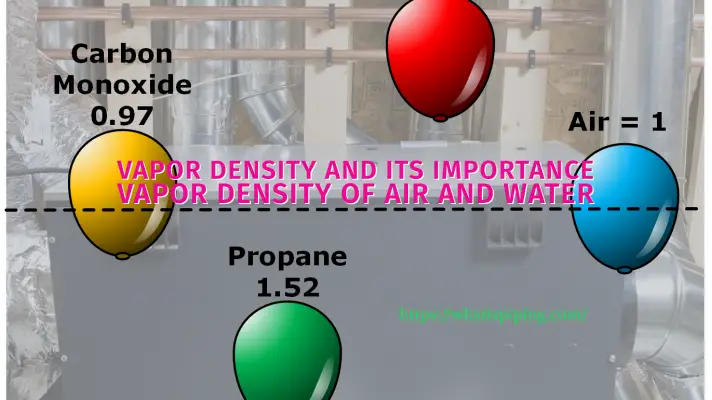Have you ever wondered why a pot handle gets hot when you cook, or why the air in a balloon expands when you heat it? The answers to these intriguing questions lie in the concept of the ratio of specific heat, a fundamental property of materials that plays a crucial role in heat transfer and thermodynamics. In this article, we’ll embark on a journey to unravel the mysteries behind this ratio and understand its significance in our everyday lives.
Understanding Ratio of Specific Specific Heats
Before diving into the ratio of specific heat, let’s quickly review what specific heat is. Specific heat, often denoted as “C,” is the amount of heat energy required to raise the temperature of a unit mass of a substance by one degree Celsius (or Kelvin). It is an intrinsic property of a material and is crucial in determining how much a substance will heat up or cool down when energy is added or removed.
The ratio of specific heat, denoted as “γ” (gamma), is defined as the ratio of the specific heat at constant pressure (Cp) to the specific heat at constant volume (Cv) of a substance:
γ = Cp / Cv
Here, Cp represents the specific heat at constant pressure, which measures how much heat is added to a substance to raise its temperature while allowing it to expand freely. On the other hand, Cv represents the specific heat at constant volume, which measures how much heat is added to a substance to raise its temperature while keeping its volume constant.
The ratio of specific heat is also known as heat capacity ratio, adiabatic index, or Laplace’s coefficient.
Significance of Ratio of Specific Heat in Fluid Mechanics and Piping Engineering
The ratio of specific heats (γ) plays a significant role in fluid mechanics and piping engineering, influencing various aspects of fluid flow, heat transfer, and thermodynamic processes. Its importance can be understood through the following points:
Compressible Flow Analysis:
In fluid mechanics, the ratio of specific heats is crucial for analyzing compressible flow, where changes in density due to pressure variations significantly affect fluid behavior. It helps determine important parameters like Mach number, which indicates the flow regime (subsonic, transonic, supersonic), and critical flow conditions.
Shock Waves and Nozzles:
In supersonic flow, shock waves form as the fluid’s velocity exceeds the speed of sound. The value of γ affects the strength and behavior of these shock waves. Additionally, the design and efficiency of nozzles (used in propulsion systems, rockets, and jet engines) are influenced by γ, which affects the expansion and acceleration of gases.
Thermodynamic Analysis:
Piping engineering involves the transportation of fluids in various industrial processes. The ratio of specific heat is essential for performing thermodynamic calculations, such as pressure drop and heat transfer calculations, in piping systems. It helps predict how much energy is required to heat or cool a fluid and how it will behave under different conditions.
Energy and Momentum Equations:
The ratio of specific heats appears in the energy and momentum equations governing fluid flow. In the energy equation, it accounts for changes in internal energy due to temperature variations. In the momentum equation, it influences pressure changes and accelerations in the fluid.
Flow through Ducts and Pipes:
When fluids flow through pipes and ducts, changes in pressure and velocity occur. The value of γ impacts the relationship between pressure and velocity changes, which is vital for designing efficient and safe piping systems.
Thermal Expansion and Compression:
In fluid systems, temperature changes can lead to thermal expansion or compression of the fluid. The ratio of specific heats affects the fluid’s response to temperature changes and is vital for designing systems that can handle thermal fluctuations without failure.
Aero and Hydrodynamics:
In aeronautical and hydrodynamics applications, such as aircraft and ship design, γ is vital for understanding how fluids behave around solid objects (aerodynamics and hydrodynamics). It helps determine lift, drag, and other aerodynamic and hydrodynamic coefficients that influence performance.
Heat Exchangers and Cooling Systems:
In heat exchangers and cooling systems, the ratio of specific heats is used to calculate heat transfer rates and energy requirements. It affects the efficiency of heat exchange and the fluid’s ability to carry away heat.
Flow Stability and Control:
The behavior of fluid systems, especially in dynamic conditions, is influenced by γ. It can impact flow stability and control, which are critical for avoiding pressure surges, cavitation, and other flow-related issues.
The Ratio of Specific heat data is also required for PSV sizing and AIV studies.
Significance in Heat Transfer
The ratio of specific heat plays a pivotal role in various heat transfer processes, such as conduction, convection, and radiation. Let’s explore how:
Conduction:
In solids, heat is transferred through conduction, where energy is transferred from higher-temperature regions to lower-temperature regions through molecular collisions. The ratio of specific heat influences the speed at which heat travels through a material, which is crucial in designing efficient heat conductors or insulators.
Convection:
Convection involves the transfer of heat through the movement of fluids (liquids or gases). The ratio of specific heat affects the fluid’s ability to expand and contract as it heats up or cools down, driving the circulation of currents that facilitate heat transfer.
Radiation:
Heat can also be transferred through electromagnetic radiation. The ratio of specific heat plays a role in determining how efficiently a material can absorb and emit thermal radiation, which is essential in applications like solar energy collection and thermal insulation.
Parameters Affecting the Ratio of Specific Heats
The ratio of specific heat (γ) is an important thermodynamic property that characterizes the behavior of a substance when it undergoes changes in temperature and pressure. The value of γ is influenced by several parameters and conditions. Here are the key factors that affect the ratio of specific heat:
Molecular Structure and Composition:
The nature and arrangement of molecules in a substance have a significant impact on its ratio of specific heat. For example, monoatomic gases like helium and argon have a γ value of 5/3, while diatomic gases like nitrogen and oxygen have a γ value of 7/5. This is because diatomic molecules have additional rotational degrees of freedom that contribute to their heat capacity at constant volume (Cv).
Number of Degrees of Freedom:
The ratio of specific heat is related to the number of degrees of freedom of the molecules in a substance. Degrees of freedom represent the different ways in which molecules can store and distribute energy (e.g., translational, rotational, and vibrational motions). The more degrees of freedom a molecule has, the higher its γ value will be.
Temperature and Pressure:
The value of γ can change with variations in temperature and pressure. In some cases, the ratio of specific heats can be considered constant over a certain range of temperatures and pressures, while in other cases, it may vary significantly. High pressures or low temperatures can affect molecular interactions and energy distribution, leading to changes in γ.
Phase Changes:
The ratio of specific heat may differ between different phases of a substance (solid, liquid, gas). During phase transitions, the arrangement and behavior of molecules change, which can influence the heat capacity and thus γ.
Complexity of the Molecule:
Molecules with more complex structures, such as those with multiple atoms or functional groups, may have different γ values due to their increased degrees of freedom.
Intermolecular Forces:
The strength of intermolecular forces (such as van der Waals forces, hydrogen bonding, or dipole-dipole interactions) can affect the behavior of a substance and its heat capacity, thus influencing γ.
Isotopic Composition:
Different isotopes of an element can have slightly different γ values due to variations in their molecular masses and vibrational modes.
Atomic and Molecular Masses:
The masses of the atoms or molecules in a substance can influence the kinetic and potential energy contributions, affecting γ.
Electronic Configuration:
In cases where electronic configurations of molecules play a role in energy storage and distribution, the electronic structure can impact γ.
The ratio of Specific Heat or Heat Capacity Ratio for Various Fluids
Ratio of Specific Heats of Air (γ for Air):
The ratio of specific heat of air, often denoted as γ_air refers to the ratio of the specific heat at constant pressure (Cp) to the specific heat at constant volume (Cv) for dry air. Dry air is composed mainly of nitrogen (about 78%) and oxygen (about 21%), along with trace amounts of other gases. The specific heat at constant pressure accounts for the energy required to raise the temperature of air while allowing it to expand, while the specific heat at constant volume considers the energy needed to increase the temperature without changing the volume.
For dry air, the ratio of specific heat (γ_air) is approximately 1.4. This value is commonly used in various thermodynamic calculations and engineering applications.
Ratio of Specific Heats of Water (γ for Water):
The ratio of specific heats of water, often denoted as γ_water, represents the ratio of specific heat at constant pressure (Cp) to the specific heat at constant volume (Cv) for water. This ratio varies with temperature and pressure due to water’s unique properties, including its phase transitions (solid, liquid, and gas). At standard conditions, the ratio of specific heats for liquid water is approximately 4.18/1.99 = 2.1, but this value can change significantly as water transitions between phases.
Natural Gas Ratio of Specific Heats:
Natural gas is a mixture of hydrocarbons, primarily methane (CH4), along with varying amounts of ethane (C2H6), propane (C3H8), and other components. The ratio of specific heat for natural gas, denoted as γ_gas, depends on the composition of the gas mixture. Since natural gas is not a pure substance, its γ value is not a fixed constant and can vary based on the relative proportions of its components.
Ratio of Specific Heats of Nitrogen (γ for Nitrogen):
The ratio of specific heats of nitrogen often denoted as γ_nitrogen, represents the ratio of specific heat at constant pressure (Cp) to the specific heat at constant volume (Cv) for nitrogen gas (N2). Nitrogen is a diatomic molecule, meaning it consists of two nitrogen atoms bonded together. This molecular structure contributes to a γ value that is close to 7/5 or approximately 1.4. This value is similar to the ratio of specific heat of dry air and is commonly used in thermodynamic calculations involving nitrogen gas.
The following table provides a list of specific heats for certain common fluids
| Gas | Temp. [°C] | γ |
|---|---|---|
| Hydrogen (H2) | -181 | 1.597 |
| H2 | -76 | 1.453 |
| H2 | 20 | 1.410 |
| H2 | 100 | 1.404 |
| H2 | 400 | 1.387 |
| H2 | 1000 | 1.358 |
| H2 | 2000 | 1.318 |
| He | 20 | 1.660 |
| Ar | -180 | 1.760 |
| Ar | 20 | 1.670 |
| Oxygen (O2) | -181 | 1.450 |
| O2 | -76 | 1.415 |
| O2 | 20 | 1.400 |
| O2 | 100 | 1.399 |
| O2 | 200 | 1.397 |
| O2 | 400 | 1.394 |
| N2 | -181 | 1.470 |
| Cl2 | 20 | 1.340 |
| Ne | 19 | 1.640 |
| Xe | 19 | 1.660 |
| Kr | 19 | 1.680 |
| Hg | 360 | 1.670 |
| H2O | 20 | 1.330 |
| Water (H2O) | 100 | 1.324 |
| H2O | 200 | 1.310 |
| CO2 | 0 | 1.310 |
| CO2 | 20 | 1.300 |
| CO2 | 100 | 1.281 |
| CO2 | 400 | 1.235 |
| CO2 | 1000 | 1.195 |
| CO | 20 | 1.400 |
| NO | 20 | 1.400 |
| N2O | 20 | 1.310 |
| CH4 | -115 | 1.410 |
| CH4 | -74 | 1.350 |
| CH4 | 20 | 1.320 |
| NH3 | 15 | 1.310 |
| SO2 | 15 | 1.290 |
| C2H6 | 15 | 1.220 |
| C3H8 | 16 | 1.130 |
| Dry air | -15 | 1.404 |
| Dry air | 0 | 1.403 |
| Dry air | 20 | 1.400 |
| Dry air | 100 | 1.401 |
| Dry air | 200 | 1.398 |
| Dry air | 400 | 1.393 |
| Dry air | 1000 | 1.365 |
Applications in Engineering and Science
The ratio of specific heats finds extensive applications in various fields:
- Aerospace Engineering: In the design of aircraft and rockets, understanding the ratio of specific heat is crucial for optimizing propulsion systems, determining engine efficiency, and predicting the behavior of gases in high-speed flows.
- Thermodynamics: This ratio is a key parameter in thermodynamic processes, such as the calculation of adiabatic processes (where no heat is exchanged with the surroundings) and the determination of a substance’s compressibility.
- Atmospheric Science: In meteorology, the ratio of specific heat helps explain the behavior of air masses, the development of weather systems, and the formation of thunderstorms.
Conclusion
The ratio of specific heats, a seemingly complex concept, plays an integral role in understanding how heat energy is transferred and distributed in various materials and systems. From cooking utensils to spacecraft, this fundamental property influences a wide range of processes in our daily lives and in the realm of science and engineering. As we continue to explore the mysteries of heat transfer and thermodynamics, the ratio of specific heats remains a powerful tool that enables us to unlock new insights and innovations.








